How these 14 Successful Startups got their first customers
How these 14 Successful Startups got their first customers. Learn how to get the first 1000 users with these growth hacks.
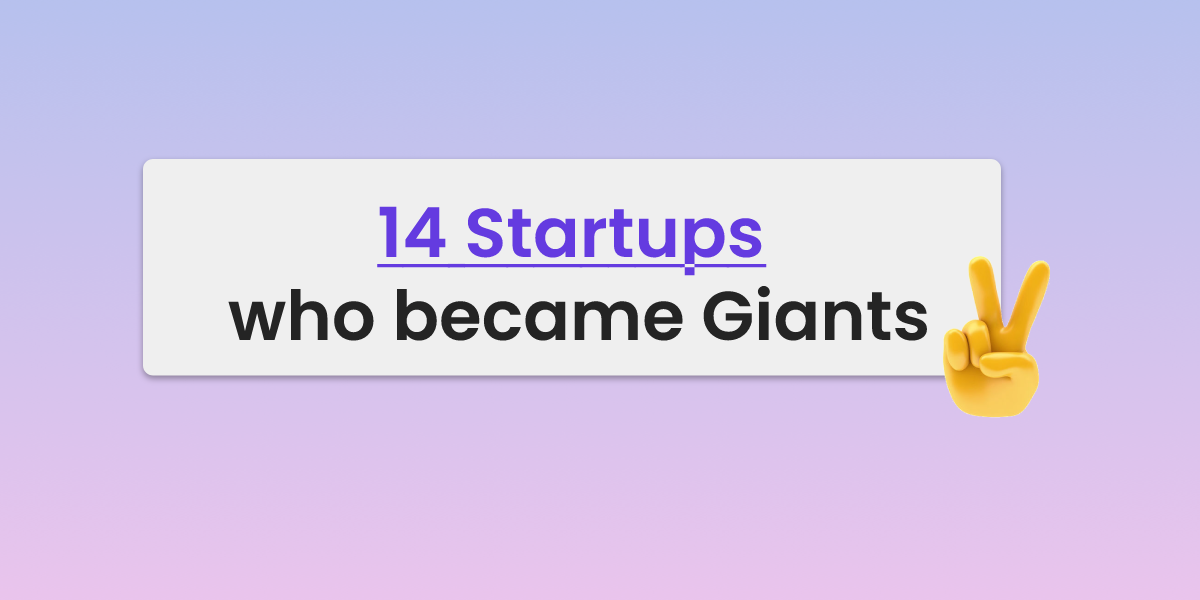

“Wow, they are so lucky” this is the first thing that comes into our mind when we see a successful company with their hordes of fans and tremendous growth.
But, it’s not just plain luck on their side; every single company struggled very hard to pave their way for success.
But how did they do that?
How these companies fought for their first customers?
Early Traction and customer acquisition is not that easy, we get that, but it’s not impossible.
To start the ball rolling all you need is the right tactics like these companies did. In this post, I have gathered some really impressive and motivating early struggling stories of these 14 companies fighting for their first customers. You’ll find in them a generous mix of grunt work, guts, and genius.
1 & 2: Buffer and Groove – got to 100k users through blogging and creating shareable content
Leo Wildrich Buffer’s co-founder used a strong guest blogging strategy to acquire over 100,000 customers for their BufferApp.
And just in 9 months. That’s 16-17 posts per month, writing 1-2 posts a day! now that’s some real hard work.
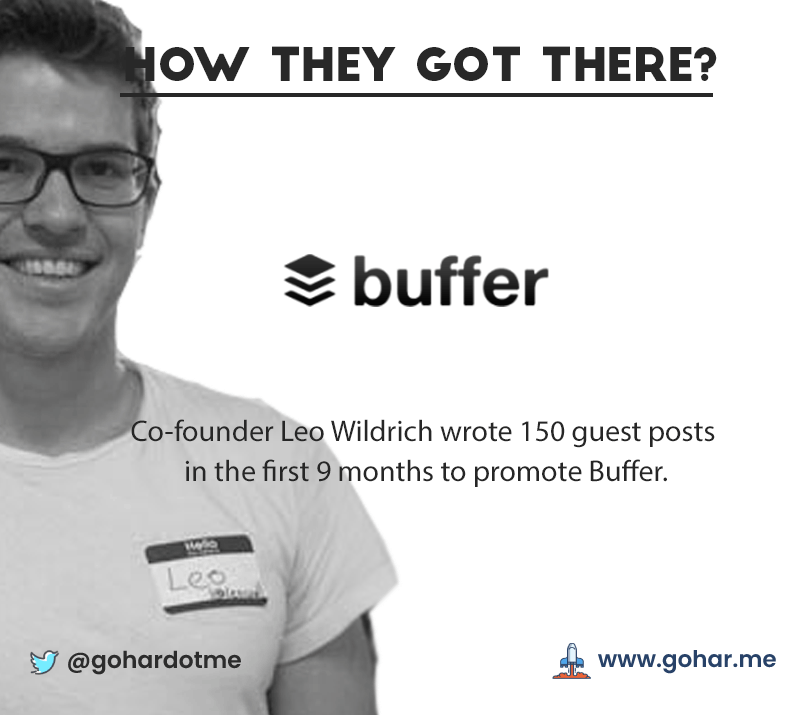
– Leo, co-founder buffer”
Groove reached their goal of $100,000 in monthly revenue, with their focus on blogging.

Alex Turnbell CEO and Founder of Groove believes in creating shareable content, therefore, he started creating posts that provide value and ultimately growing Groove. But more than creating he focused on sharing the content he creates new content.
Alex Turnbell shares his strategy on how they got their first 100 paying customers in 24 hours. check it out here.
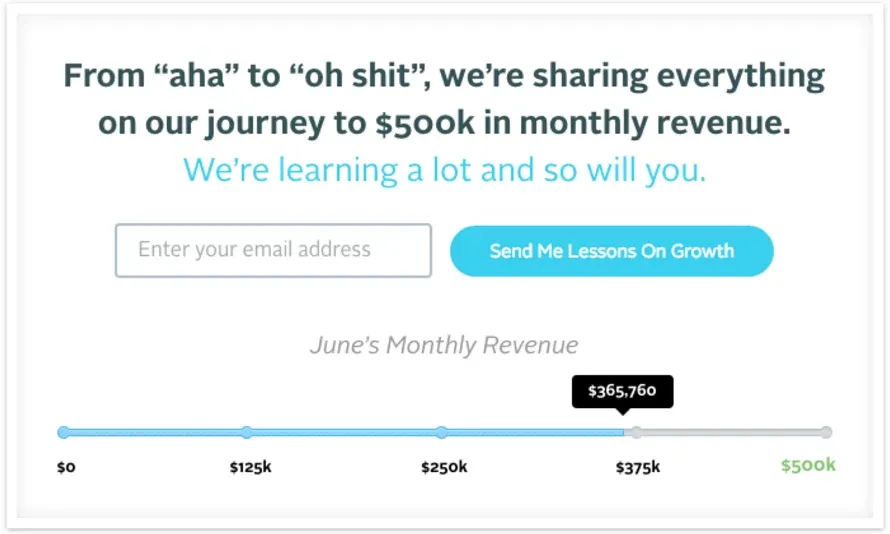
3, 4 & 5: Alibaba, Tinder & Airbnb – physically travelled to their first customers
Alibaba “brute-forced” its success by visiting factories one by one.
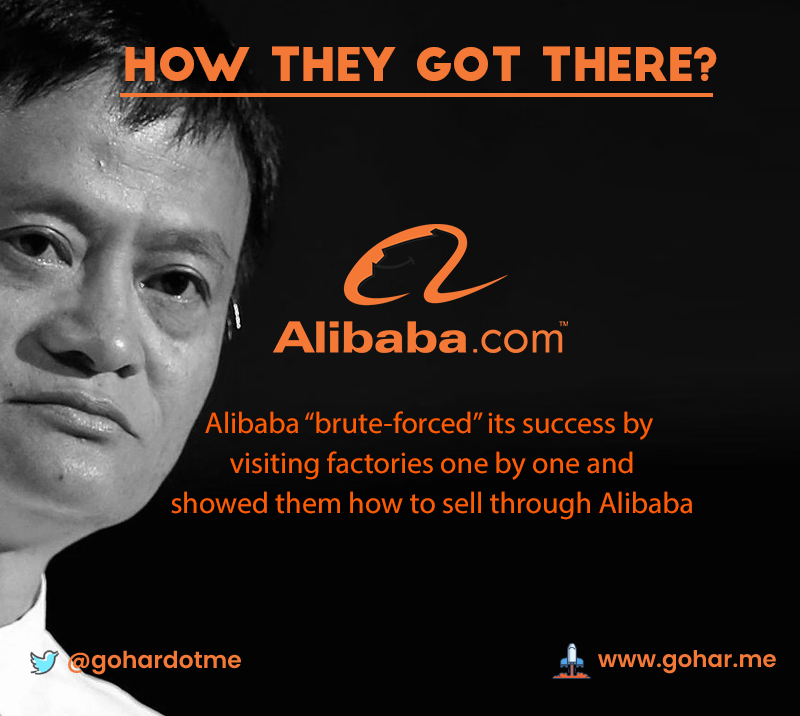
Jack Ma an English teacher turned Internet Entrepreneur is the founder of Alibaba. Alibaba’s sales team flocked across the country, visiting factories one by one to show them how they can use Alibaba and Taobao to sell their stuff online.
At that time, factories in China weren’t used to working with other people online, and some didn’t even have computers and the Internet.
The hard work paid off and companies quickly moved to Alibaba. This gave them an edge over eBay.
Tidbit: Jack Ma is the richest man in China.
From 5,000 to 15,000 users; Tinder used sorority girls to sign up on the spot.
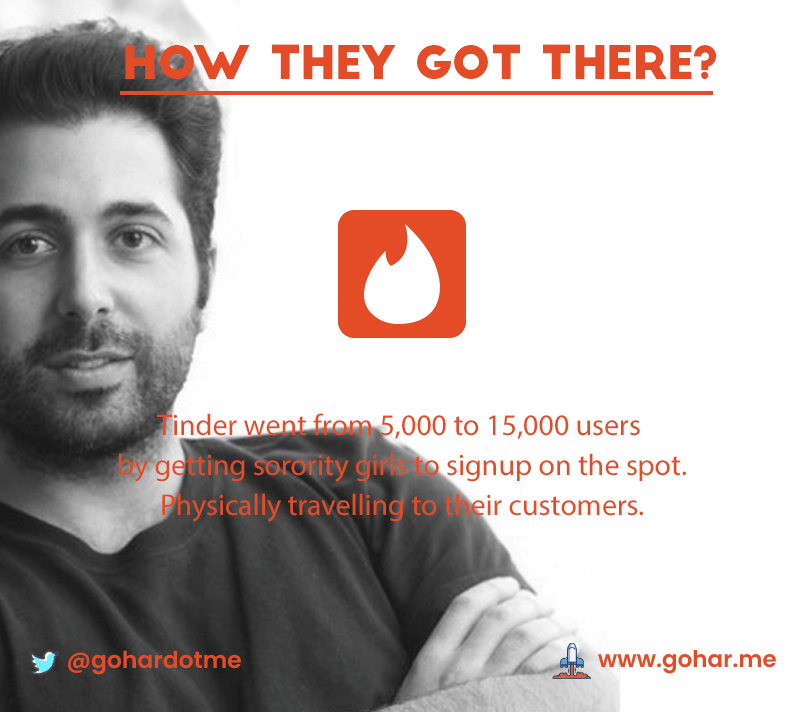
For early user Acquisition, CMO Whitney Wolfe’s strategy really worked by planning a tour to prominent college campuses and signing up students to use Tinder.
- She would go to different sororities, do her presentation and have all the girls install the app.
- Then she’d go to the corresponding brother fraternity—they’d open the app and see all these cute girls they knew.
- Tinder had fewer than 5,000 users before Wolfe made her trip. When she returned, there were some 15,000.
Airbnb went an extra mile for their first users
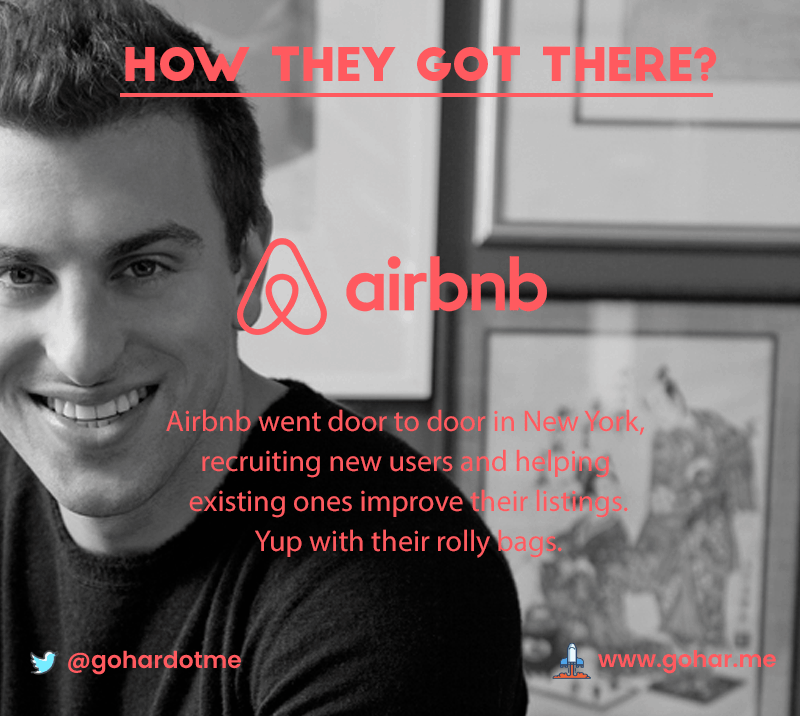
“When New York took off, we flew back every weekend. We went door to door with cameras taking pictures of all these apartments to put them online. I lived in their living rooms. And home by home, block by block, communities started growing. And people would visit New York and bring the idea back with them to their city.” – Brian Chesky, for The Atlantic
They physically travelled to New York to acquire their early users and followed up with them.
6: Dropbox – word-of-mouth worked for them
Dropbox launched a massive referral campaign and introduced shared folders

Dropbox raised between $250 to $400 million dollars, which put the company at a valuation of ten billion dollars. That’s $10,000,000,000! wow
100k to 4 million users in 15 months. Building an Empire on Referrals.
- In accord with Founder and CEO Drew Houston, Dropbox signups increased by 60% percent permanently through referrals.
- Growing its user base from 100,000 to 4,000,00 – 40 times increased with its massive word-of-mouth campaign in just 15 months.
- 2.8 million direct referral invites were sent in April 2014 alone.
- They also introduced a nifty feature of sharing your folders which encouraged users to invite more users.
Hubspot shared 5 viral marketing lessons from Dropbox – and Referral Candy shared Insights on Dropbox's referral strategy.
7 & 8: Reddit and Quora – Contributing early content themselves
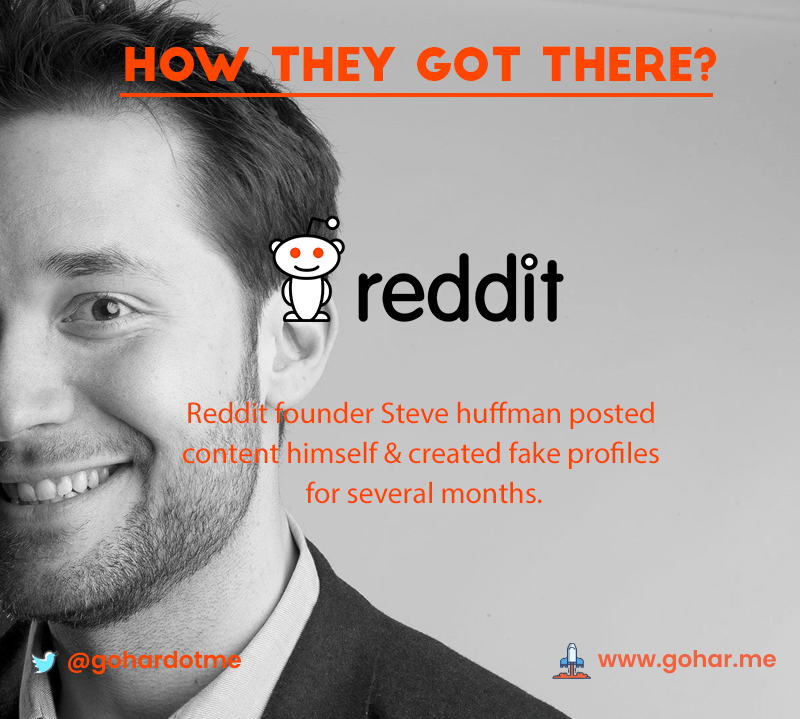
Reddit generates over 2 billion monthly page views with more than 35,000,000 monthly unique visits. But before Reddit gained such attraction, it was just a couple of guys trying to attract people on their link-sharing website.
Launched in 2005, it was relatively quiet and devoid of users. According to Huffman and his co-founder Alexis Ohanian, their team submitted a ridiculous amount of content under fake profiles.
“I remember the first day, a few months in (to the site’s launch) when we didn’t have to submit any content. It was such a magical feeling because it meant everything was finally working on its own,” Huffman said.
Quora seeded its site with their own content

Every early Internet Entrepreneur faces the “chicken and egg problem” of
“empty site = no users / no users = empty site”.
D’Angelo, Cheever and Cox co-founders of Quora solved this problem by writing most of the earliest questions and answers themselves. Their first employees and beta testers then continued this trend, until Quora attracted enough activity for them to stop.

9 & 10: Pinterest and Stripe: Motivated people to use their website
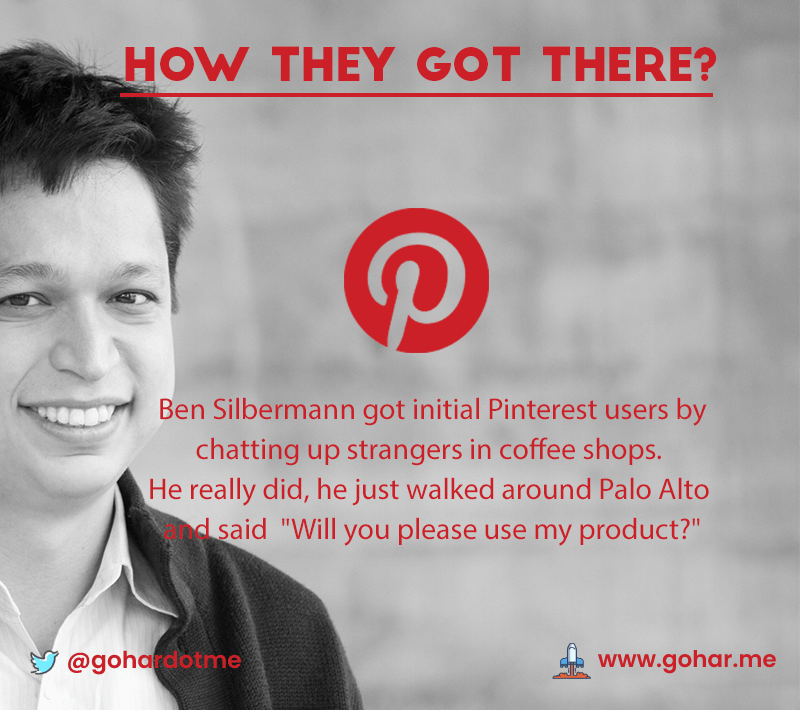
When Pinterest was a joke, Ben Silbermann enlisted the initial Pinterest users by chatting up strangers in coffee shops. He really did, walked around Palo Alto and said “Will you please use my product?”
Wait one more interesting about Ben Silberman
He also used to run around the Apple store in Palo Alto, and changed all the homepage to Pinterest real quick, before they caught him and kicked him out.
You can learn more about this important lesson of “doing things that don’t scale” described by Paul Graham.

Stripe recruited their users manually

Stripe was not amongst the ones who relied on sitting back and waiting for their users. Instead, they were aggressive in their user acquisition.
They even invented the technique called “Collison installation”.
“Great, we’ll send you a link”, is the usual answer most founders will give when someone says Yes, to trying their product.
But these collision brothers were not patient enough to wait. When anyone agreed to try Stripe they’d say “Right then, give me your laptop” and set them on the spot.
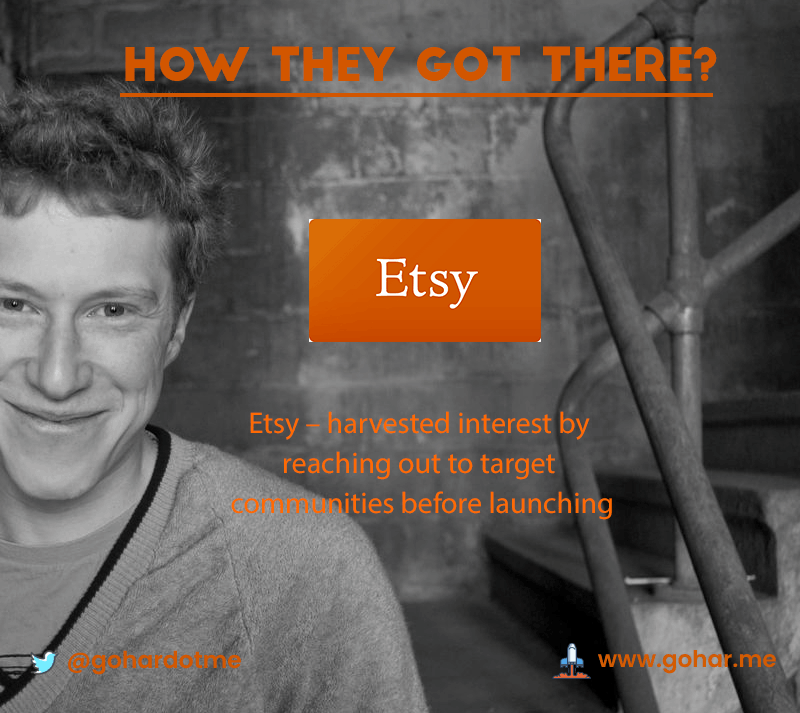
Etsy founders knew how to leverage other communities to grow theirs.
Before Etsy, they used to run a web design agency and were working on getcrafty.com for one of their projects, during which they discovered the need for a marketplace for handmade crafts.
So while they built Etsy, they stumbled across different other craft communities like getcraft.com and craftster.org, to leverage from their larger user base.
By the time they launched, they already had a lot of interest generated among the two platforms, and that helped them get the required inventory and start off transactions on Etsy.
12: Facebook – Yes the largest social network was once a tiny startup
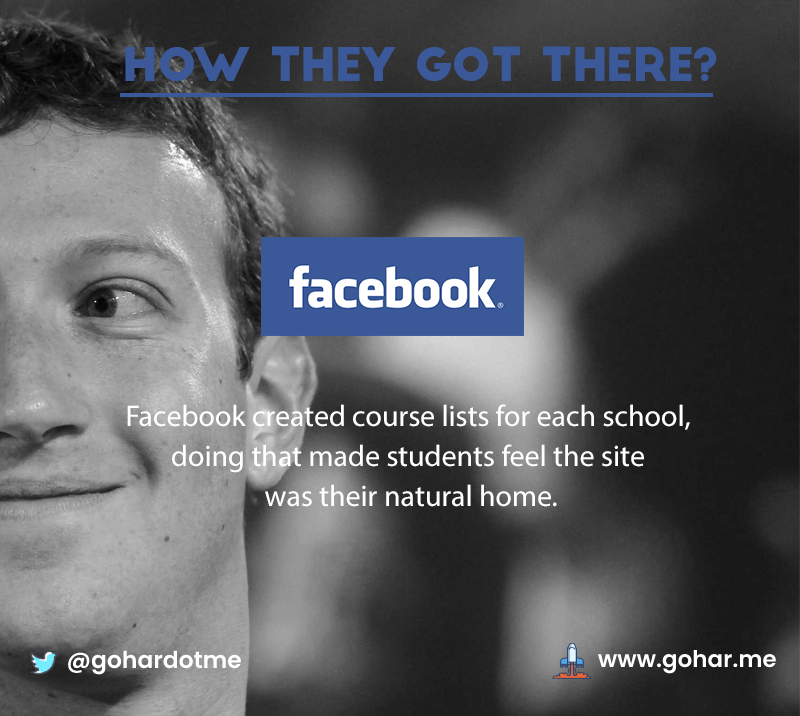
Mark Zuckerberg the youngest billionaire on the planet, created course lists for each school as Facebook remained for students at specific colleges for quite a while. This was hard work admits Zuckerberg but this made students feel the site was their natural home.
Tidbit: You can’t block Mark Zuckerberg on Facebook. Go to www.facebook.com/zuck and try it for yourself.
13 & 14: Evernote and Yammer – Use your product as your Marketing tool
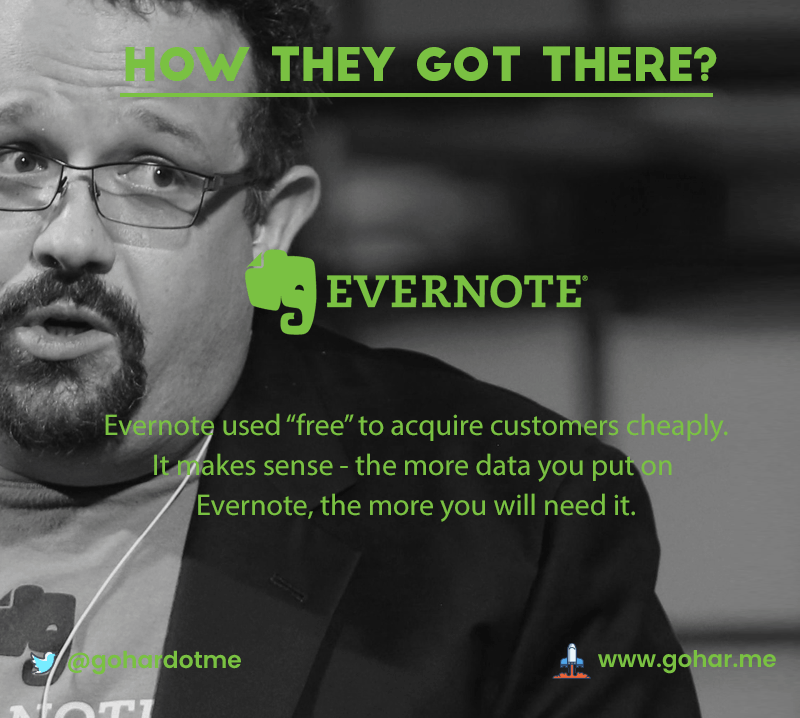
The Freemium model doesn’t always work for every company and many great products even closed their doors providing freemium due to the running costs required to maintain their service. [how many startups you used or loved are now closed down? comment them below]
Now back to Evernote, they did freemium out of necessity, but also because it was well-suited for the model. Libin founder of Evernote studied their earliest adopters and noticed that the longer customers used the service, the likelier they would pay for it.
And it makes sense – the more data I put on Evernote, the more I need Evernote.
If done right, the Freemium model could certainly work for those who know how to provide great customer support and can retain customer loyalty and make their service more valuable over time, while driving down costs.
Tidbit: Haven’t figured out the logo quite yet? Well, an elephant never forgets. (And with Evernote, you’ll be able to remember all your notes too!)
Yammer – lured their users with free basic

“Any employee in a company can come to our website and sign up for Yammer, thus creating a Yammer network for his/her company. That is how we have gotten into 90,000+ companies and organizations in just over 2 years,” says founder Sacks.
The freemium approach has worked for Yammer – they had a 15% conversion rate from the basic to the premium version.
Let’s Recap:
1. Believe in the Power of blogging and create shareable content that creates value [Buffer, GrooveHQ]
2. Physically travel to your customers [Ali Baba, Tinder, Airbnb] – I personally believe and act on this tip
3. Encourage Word-of-Mouth through different tools, campaigns and features [Dropbox]
4. Populate the content yourself to get more users on board [Reddit, Quora]
5. Harvest interest from target communities before launching [Etsy]
6. Bait with Freemium, its cheap and powerful [Evernote, Yammer]
7. Motivate people to use your service [Pinterest, Stripe]
